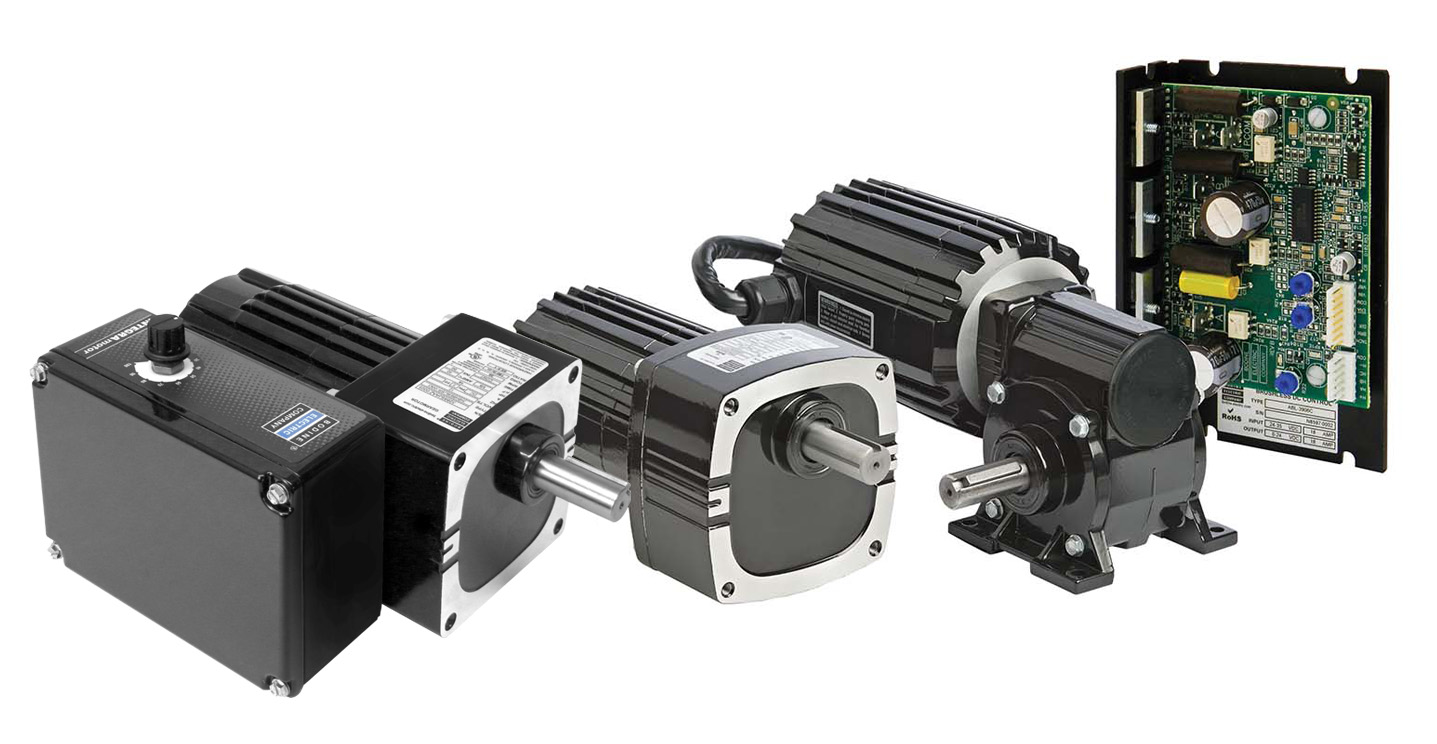Brushless DC (EC) Gearmotors and Motors

What Is a Brushless DC Motor?
Brushless DC motors could be called “inside-out permanent magnet motors” because brushless DC motors have their magnets on the rotating part of the motor instead of on the stationary part. Accordingly, they have their windings on the stationary part of the motor instead of on the rotating part, as in a permanent magnet DC motor. Despite the differences in construction, their speed-torque curves are very similar to those of permanent magnet DC motors. Operation of a brushless DC motor is similar to a permanent magnet motor except that the winding phases are switched on and off electronically by means of a control device. That is why we also refer to these motors as Electronically Commutated (EC). The control “knows” when to switch the windings because of feedback it receives from rotor position Hall effect sensors.


Brushless DC Advantages

Brushless DC motors require less maintenance, provide long life, low EMI, and quiet operation. They produce more output power per frame size than AC or permanent magnet DC motors and gearmotors. Low rotor inertia improves acceleration and deceleration times while shortening operating cycles, and their linear speed/torque characteristics produce predictable speed regulation. With brushless DC motors, brush inspection is eliminated, making them ideal for limited access areas and applications where servicing is difficult or not desired. Low voltage models are ideal for battery operation portable equipment, or medical applications where shock hazards cannot be tolerated.
Features
- Electronically commutated
- High energy, rare earth magnets used for rotor field
- Requires speed control with 6-lead connection (3 power, 2 Hall Effects, 1 drain)
- Rated speed 2500 RPM; minimum 150-200 RPM
- Linear speed torque curves
- Built-in tach pulse for economical speed readout
- Encoder options for servo performance
Benefits
- No brush wear and no maintenance for less down time
- Quiet, reliable operation
- Easy connections
- More power from a same size motor (BLDC vs. AC 3-phase)
- Higher torque at low speeds than variable speed AC systems
- Higher starting torque than a 3-phase AC, variable speed inverter duty system
- Thermally more efficient than PMDC motor system
Standard Products
- Matched gearmotor-control system solutions
- 12, 24, and 130 VDC motors, gearmotors, and controls
- High speed (up to 20,000 RPM) motors and controls
- Two-year limited warranty for matched Bodine motor-control systems
- 22B/SR and 34B/FV 24VDC INTEGRAmotors provide integrated motor, control and feedback systems
Custom Solutions
- 48B motor achieves up to 1.5 HP with matched speed control (type EBL)
- Analog (SR) and Digital (FV) interface INTEGRAmotor options
- Environmentally protected versions for OEM applications
- Third-party markings, including Class I/Div 2
- Custom control designs available for OEM applications
Comparison of Different Variable Speed Systems
| Features | Brushless DC | PMDC | AC 3-Phase |
|---|---|---|---|
| Brush wear, brush replacements | Never | Yes | Not Required |
| High torque at speeds above and below rated | Yes | Yes | No |
| Noise Level | Lowest | Higher | Higher |
| Performance | Best | Good | Limited |
| Speed Range | Widest | Widest | Limited |
| Control required | Yes | Yes | Yes |




Applications and Industries
- Laboratory equipment where quiet, clean, long-life operation is critical such as blood analyzers, centrifuges, mixers, shakers, MRI or cat scan equipment
- Packaging equipment for labeling, bottling, glue applicators, shrink tunnels
- Factory automation and conveyor systems
- Photocopiers, printers, and printing presses
- Pallet feeders for plastic processing
- Metering pumps for chemical treatments, lab, industrial
- Solar power, alternative energy sources, remote locations
- Food processing, food handling, commercial ovens
- Automated barriers
Frequently Asked Brushless DC Motor and Gearmotor Questions:
- Can I make my own extension cable? What do I have to consider?
- Yes, you can make your own cable, however they must have EMI and RFI shielding. Most wiring errors we encounter are due to improper or missing shielding.
- How long can the cable be?
- 50 Feet maximum.
- What is the minimum speed of Bodine brushless DC motors?
- 150-200 RPM, depending on what kind of control is being used.
- What should I check first if a brushless DC motor stops working?
- Check set-up, wire harness and connections.
- My red fault light is on!
- Noise might be coming into the input of the control or there might be overvoltage to control input.
- Can I have preset fixed speed settings?
- Yes, replace the pot with a resistor divider with rotary switch.
- Can we run faster than 2500 RPM?
- Yes, by adjusting the MIN/MAX pot – However, the available speed range will change.